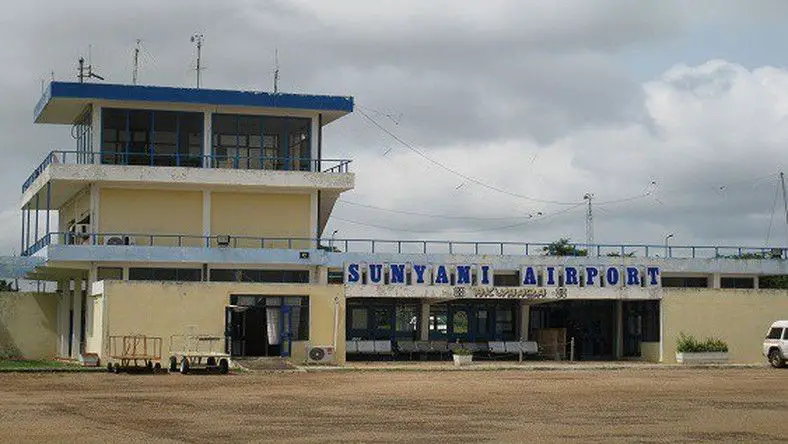Phase I of the rehabilitation of Sunyani Airport has been commissioned by President Nana Addo Dankwa Akufo-Addo recently.
The President, who hailed the commissioning as a turning point in Sunyani’s growth and development, stated that the airport’s renovation was necessary to fulfill Ghana’s aspiration of becoming a major hub for aviation in West Africa.
The Sunyani Airport was first utilized as an airstrip by the Allied Forces in 1942, during the Second World War. Construction on the airport’s conversion began in 1969 when the foresighted Busia Government saw the necessity for an airport. On July 13, 1974, Col. P.K. Agyekum, the then-Commissioner for Transport and Communications, completed and declared it officially open.
Also Read: €133 m to be invested to improve water supply in Sunyani
According to President Akufo-Addo, the Rehabilitation of Sunyani Airport which has a long history was permitted to deteriorate and temporarily close in March 2016, and this was the least the nation could have done for the people of the Bono Region.
Rehabilitation of Sunyani Airport Overview
President Akufo-Addo announced that M/S Resource Access Limited was given a contract to start the Sunyani airport’s rehabilitation in 2019. This is in keeping with his government’s policy to provide a functional air travel infrastructure to enhance the development of the country’s middle belt and strengthen the growth of agriculture, general business, and industrial transformation.
According to Akufo-Addo, the scope of work comprised internal road construction, apron repair to handle small to medium-sized aircraft, minor renovations to the Terminal Building, and rehabilitation and extension of the runway from 1,280 to 1,400 meters.
It is anticipated that domestic passenger traffic would increase over the next few years, necessitating additional infrastructure improvements.
“I’m pleased to let you know that measures that will open up our nation’s aviation industry are presently underway. They are Phases II and III of the Kumasi Airport Project, and Phase II of Tamale Airport,” the President declared.
The President informed locals that the Sunyani Airport project portends bigger things for Sunyani, the entire country, and the world.
Reported earlier
Oct 2019
Rehabilitation of Sunyani Airport in Ghana nears completion
Rehabilitation works at the Sunyani Airport in Ghana are almost complete. President Nana Addo Dankwa Akufo-Addo made the announcement and said that the airport will be reopened by end of this year.
Sunyani Airport is an airport serving Sunyani, a town and capital of Brong Ahafo mid-western Ghana. The airport dates back to 1942 when a communication outpost and aerodrome were built for the use of the Allied Forces. However, before the end of the war, the airport was abandoned.
Rehabilitation works
Rehabilitation works on the airport involve the runway receiving a facelift and the main hall partitioned. Some of the offices within the airport will also be relocated. Project contractor, DAA Construction built a fence wall around the airport while Resources Access Limited (RAL) is handling resurfacing and extension of the runway as well as separation of the departure hall from the arrival hall.
Also Read: Construction of 2nd runway at Nnamdi Azikiwe Airport to commence soon
According to Minister of Aviation, Mr. Joseph Kofi Addah, the runway had to be extended from the northern and southern sides. Additionally, 10km of Sunyani town roads would be asphalted by the end of March next year while several roads in the region have been awarded on contract. More than US $9m is being spent on the development.
“Rehabilitation of the worn-out bitumen and cracks on the runway was critical since the current state of the runway was not good for landing and taking off. The current length of 1.4km runway needed an additional 500 or 600 meters to make it a standard airport for aircraft to land and take off. Engineers will consider whether to fill up the valleys or constrict overheads to get the required length,” said Mr. Addah.
